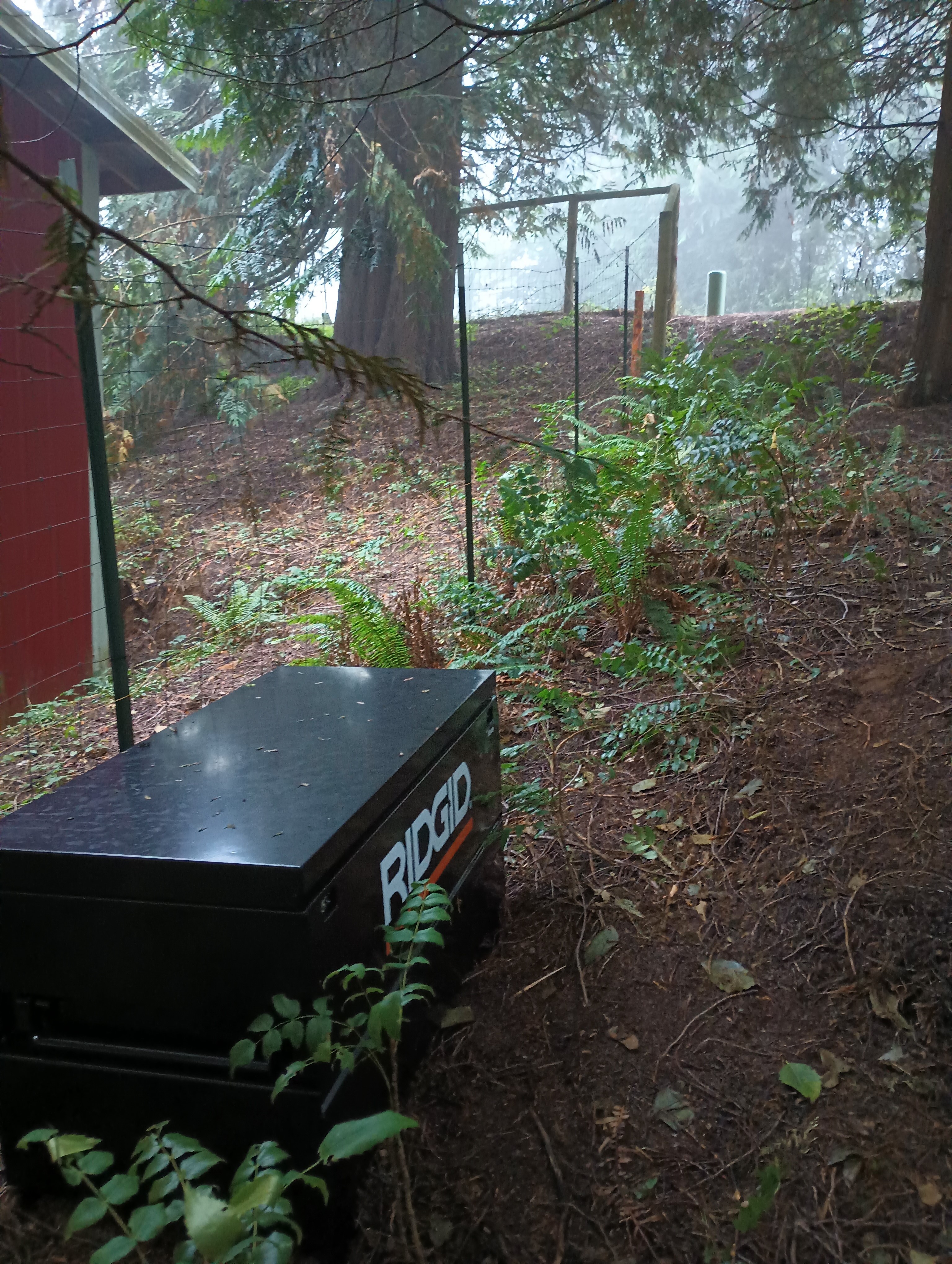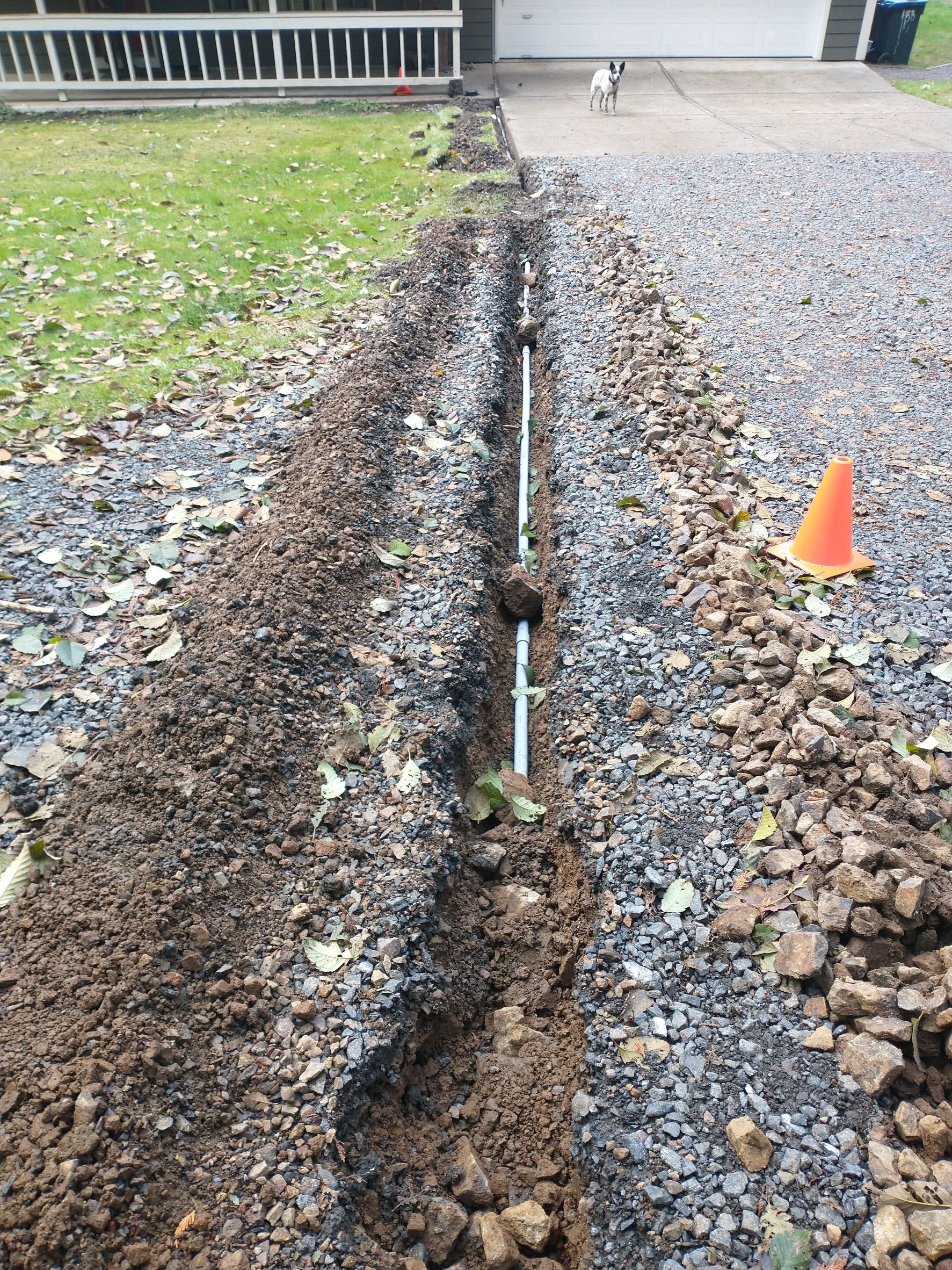-
Running the Fiber Optic Cable
12/03/2022 at 03:34 • 0 commentsThe biggest issue with running 700 ft of fiber optic cable is making sure the cable is sufficiently protected. Ideally, I should run a conduit the entire way with the cable inside. However about 85% of it runs though a forest. In addition to massive amount of trenching, I also didn't want to damage tree roots.
I did have alternative, which was a wire fence already running along the property line (see picture below). While it's not underground, it would be easy enough to wire tie to the fence and prevent it from be stepped on.
![]()
Since it was going to be exposed to the elements, I did want some protection. After doing some research, I found some armored fiber optic cable. Around the glass fiber is a steel coil, wrapped with a UV resistant outer layer.
After using weather resistant zip ties (black) to attach the able along the fence, the last section was run underground in conduit. Just be sure to respect the minimum bend radius.
![]()
-
Choosing and Powering the Electronics
12/02/2022 at 19:14 • 0 commentsIn the previous log, I laid out the reasons for choosing fiber optic cable for carrying the internet connection from the ISP to the house. This leaves the issue of powering the cable modem 700 ft (213 m) away from our house.
Running power that far leads to big expensive wires to deal with the voltage drop. Power from the utility company is available at the street, but the lines for our house are located elsewhere and a new power drop would have cost about $5000. On top of that, there's a minimum monthly charge of $15/month.
Given those costs, a solar power setup makes a lot more sense. In order to minimize the cost of the system, I wanted to choose electronics with low power requirements. I also knew that I wanted electronics that I could power directly from 12VDC to eliminate power losses involving an inverter.
The first item I needed was a cable modem. I wanted to support Gigabit speeds, but not have WiFi or any other features that would increase the power requirements. The cable modem I settled on was the Netgear CM2000. It's DOCSIS 3.1 capable, supporting speeds up to 2.5 Gpbs. It also had one of the lowest power requirements, which was 1.5 amps at 12VDC (18W).
The media converter was a bit harder to find. Turns out that most of the media converters converting 1 Gbps Ethernet to Fiber run on 5V DC. This could have been workable, but it would have meant adding extra electronics (and power) to set down to 5V.
There was one provider, FS, that had a media converter than could take 5-12V DC. It supports 1 Gbps and draws less than 3W.
The total required power draw then 21 Watts, so I needed a solar power system which is capable of providing 500 W/day, which isn't too bad (in actuality, the power draw is close to 12W, which only means 288 W/day)
However, I live in the Pacific Northwest and we get lots of cloudy days and snow, so I wanted a battery capable of providing powers for several days and panels that could charge the battery quickly when there's a break in the clouds.
I ended up going with a 200W solar power kit from Renogy, with a 40A capable charge controller in case I needed to add more panels (cause I have lots of trees and shade, which is a story for another time). For the battery I decided on a 12V 200 Ah battery, but if your in area with more consistent sunlight, you probably wouldn't need more than a 100 Ah battery.
-
Choosing the Network Type
11/29/2022 at 04:17 • 0 commentsI needed to get our internet connection to our house over a distance of 700 ft (213 m). Running a coax cable from the street to our house wouldn't support getting a strong enough signal. Researching the internet, I didn't find anyone who'd run a coax drop longer than 250 ft.
One of the first alternatives I researched was Ethernet. Cat 6 can support 1 Gbps to 100 meters (328 ft), but you can break it up into multiple runs with switches in between to go farther. I'd need to do at least 3 runs given the distance. The biggest hurdle with this option is that there's no power available for those intermediate switches.
The best option given the distance if I wanted to maintain the Gbps speed was fiber optic cable. FS has a table of speed and distance capabilities for single and multi-mode fiber optic. Single mode fiber can support 1 Gpbs up to 5km, so this seemed like the best option.
I should add that there are wireless options for this distance. However, being the Pacific Northwest, there are a LOT of trees and no line of sight, so it was a non-starter.
At this point, the overall concept was to place the cable modem close to the port, use a media converter to go from ethernet to fiber optic and bring the fiber optic cable to the house. That does leave the problem of powering a cable modem 700 ft, which I'll cover in the next log entry.
Running Gigabit Internet between 100m to 5km
Documenting my project to get Gigabit internet speeds to my house which is greater than 100m away from the ISP
 Peter McCloud
Peter McCloud
